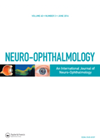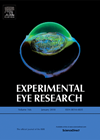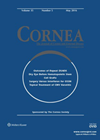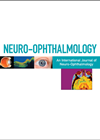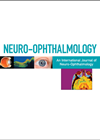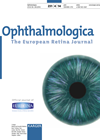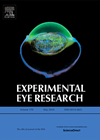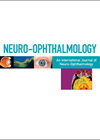You searched for "bleeding"
Advanced vestibular Schwannoma case report
1 December 2016
| Claire Howard
|
EYE - Neuro-ophthalmology
|
Cerebellopontine angle tumour, papilloedema, vestibular schwannom
Vestibular Schwannoma is a benign, slow growing tumour which usually presents with unilateral hearing loss. It causes symptoms and findings on ophthalmic examination when the diagnosis is delayed. Ophthalmic findings may be related to the effect of the expanding mass...
MicroRNAs in cataract
1 August 2016
| Graham Wallace
|
EYE - Cataract, EYE - Refractive
|
Age-related cataract, Lens epithelial cells, Lgr4, MicroRNA let-7b, Ultraviolet irradiation
In an ageing population cataract formation is one of the leading causes of blindness. Cataracts are caused by a failure to clear accumulating aggregated proteins in the lens. MicroRNAs are small non-coding transcripts which bind to specific mRNAs acting at...
Maintenance therapy for CMV endotheliitis
Cytomegalovirus (CMV) has been associated with corneal endotheliitis, leading to endothelial cell loss and corneal decompensation. CMV corneal endotheliitis recurrence can affect between 5-60% of eyes after cessation of anti-CMV therapy. Each recurrence of endotheliitis has a detrimental effect on...A case report of visual loss as a consequence of coeliac disease
1 June 2016
| Claire Howard
|
EYE - Neuro-ophthalmology
|
Calcification, coeliac, occipital, visual loss
The authors present a case of permanent visual loss secondary to occipital lobe calcification in coeliac disease, the first reported such case. The 58-year-old man had been diagnosed with coeliac disease 20 years prior to his visual investigations and had...
A case series of acute visual loss following excessive alcohol and / or drug use
1 August 2015
| Claire Howard
|
EYE - Neuro-ophthalmology
|
Ophthalmoplegia, retinal artery occlusion, saturday night retinopathy
This study presents three cases of so called Saturday night retinopathy, an acute visual loss following intravenous drug abuse and stupor, leading to continuous pressure on the orbit while asleep. All three cases presented with acute vision loss and had...
Imaging requests for CNP
The authors sought to answer the question of to what extent do differences in policy exist between ophthalmologists and neurologists regarding imaging by MRI of patients with acquired ocular cranial nerve palsy (CNP). They conducted a literature review leading to...Rare case reports of benign optic glioma in adults with clinically aggressive nature
1 April 2015
| Claire Howard
|
EYE - Neuro-ophthalmology
|
Adult optic glioma, ganglioglioma, pilocytic astrocytoma, WHO Grade I–II
Primary optic nerve gliomas are most commonly benign and occurring in childhood. Malignant optic gliomas occur in adulthood and follow an aggressive course usually leading to blindness and death within months. This paper describes the clinical and histopathological features of...
Diagnostic procedures in vitreoretinal lymphoma.
1 December 2014
| Nikolaos D Georgakarakos
|
EYE - Vitreo-Retinal
This paper presented a retrospective review of medical records of HIV negative immunocompetent patients diagnosed with vitreoretinal lymphoma between 1994 and 2012. The aim of the paper was to evaluate the type and number of diagnostic interventions required to confirm...
Neurotrophic keratitis
The authors present an overview of the aetiology, diagnosis, current and future management options of neurotrophic keratitis. This is a degenerative corneal disease that occurs following the compromise of trigeminal innervation, leading to hypoesthesia and / or anaesthesia. The aetiology...Autophagy in lens mitochondria loss
1 April 2014
| Graham Wallace
|
EYE - Cataract, EYE - Refractive
|
ATG5, FYCO1, FYVE and coiled coil domain containing 1, LC3B, OFZ, Pik3c3, TOM20, autophagy, autophagy-related 5, cataract, differentiation, electron microscopy, lens, microtubule-associated protein 1 light chain 3B, mitophagy, organelle free zone, phosphatidylinositol 3-kinase, catalytic subunit type 3, translocase of the outer mitochondrial membranes 20 kDa
The lens consists of a monolayer of epithelial cells that overlies fibre cells that differentiate from epithelial cells at the equator. While developing, fibre cells need mitochondria to provide energy, as they mature they lose these and other organelles to...
A case report of cavernous sinus syndrome following dental procedure
1 April 2014
| Claire Howard
|
EYE - Neuro-ophthalmology
This case report describes a patient presenting with painful diplopia as a consequence of root canal dental treatment. Following root canal treatment a non-resolving tooth pain led to a decision to extract the tooth, leading to onset of severe periorbital...

